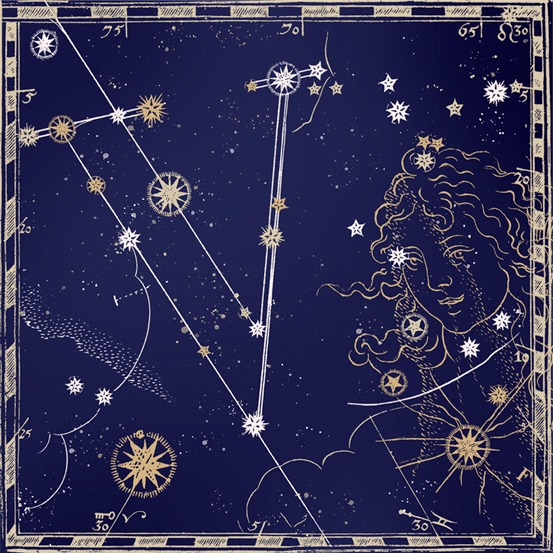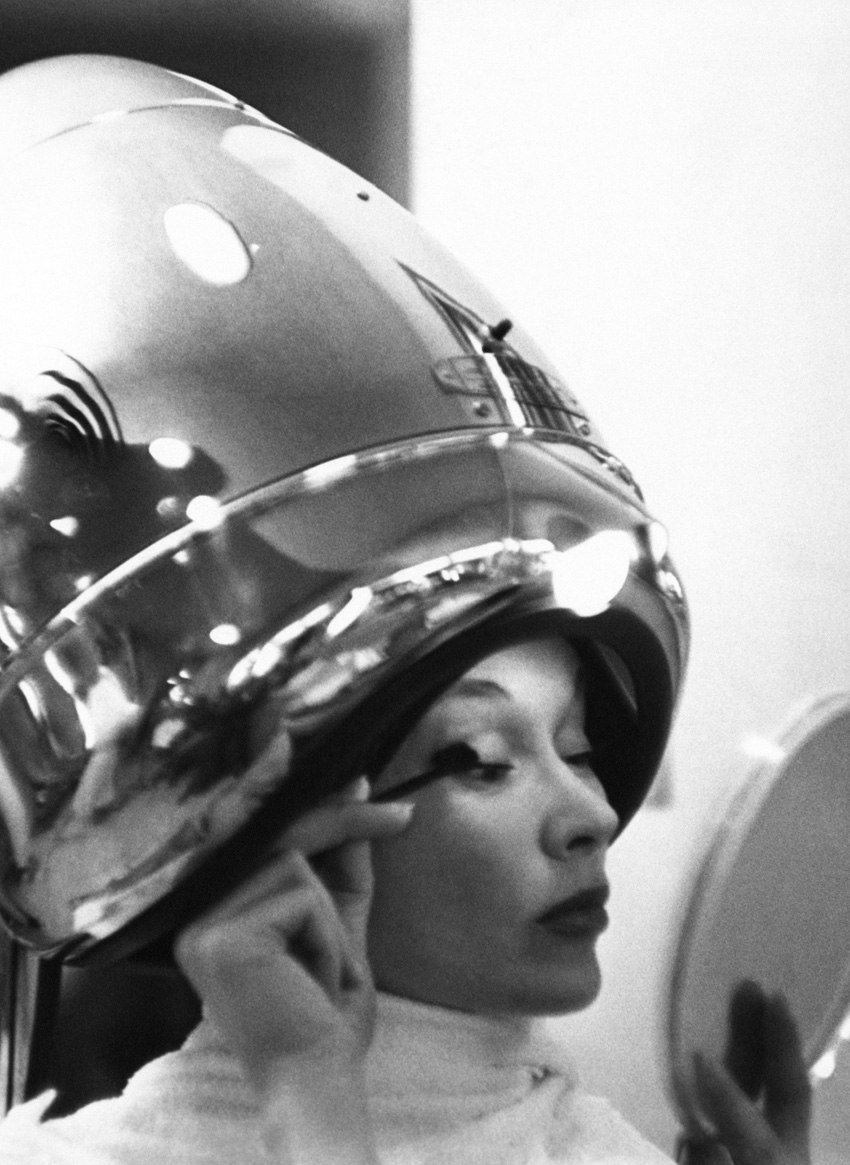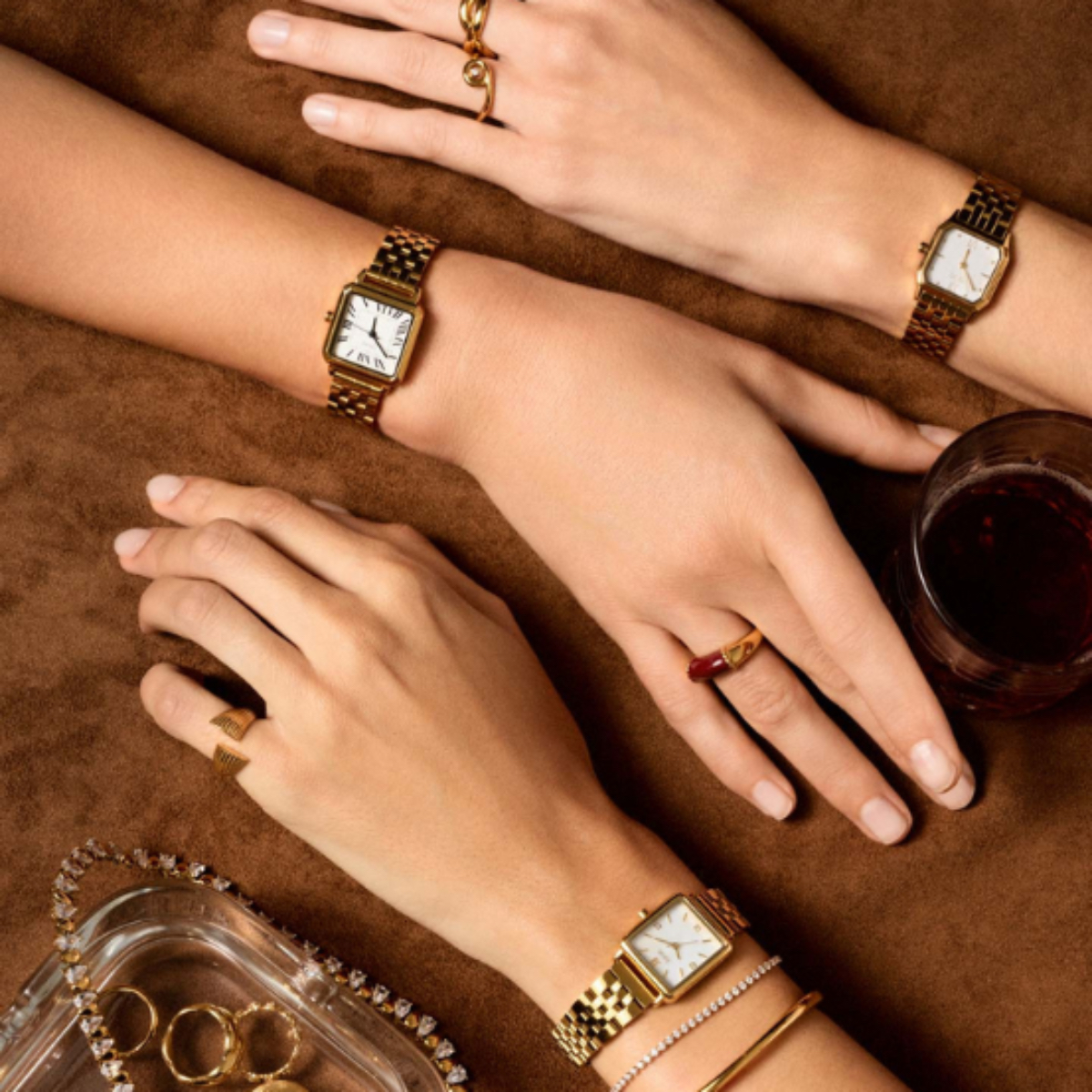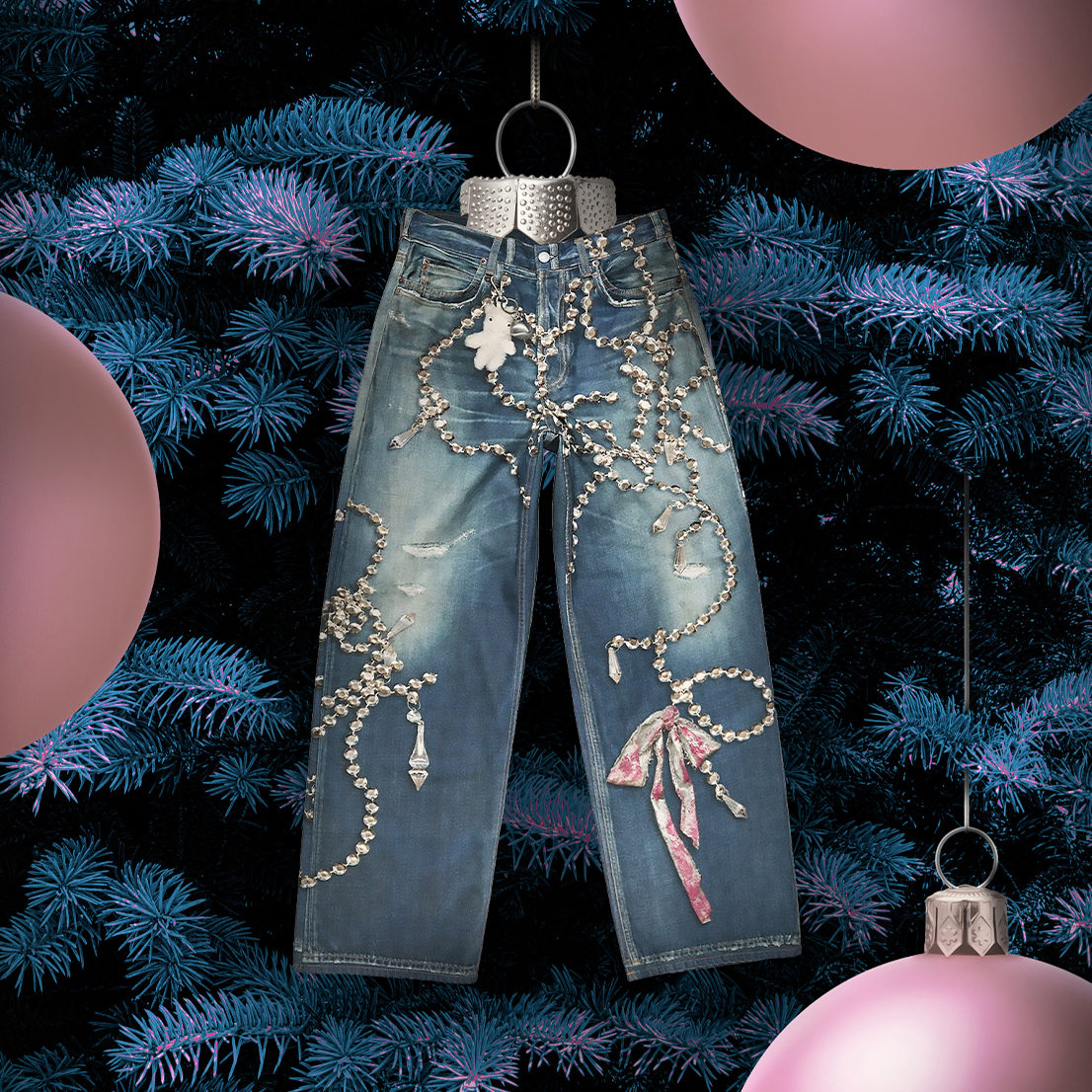The Big Book of Trends
Dazzling despite the challenges, luxury beauty continues to shine as brands captivate with quality, innovation, artistry, and emotion. Fragrances are the shining star of the segment, with high-end and niche brands attracting consumers willing to invest on them, even during financially challenging times. Even the most functional cosmetics – like elixirs and toothpaste – have found the ideal market to thrive in luxury, with compelling narratives that transform us into aesthetes and make us desire to own the bottles and tubes and display them in our homes. Some lights never fade out, and luxury cosmetics – though controversial – are a beacon towards the future.
Yves Saint Laurent was the first to say “Sans élégance de cœur, il n’y a pas d’élégance”. This statement encapsulates the philosophy that true elegance transcends mere appearance and is rooted in the qualities of the heart. For a fashion icon like Saint Laurent – whose creations revolutionized feminine beauty – this sentiment underscores the belief that genuine elegance synchronizes outward glamour and sartorial choices with inner virtues such as kindness, integrity, and authenticity. Coco Chanel –always avant-garde – went further and added that without these, "cosmetics would be useless" with luxury being "a necessity that begins where necessity ends". In a world often obsessed with superficial beauty, this perspective reminds us that the essence of true style lies in the character we carry within us – a timeless message that continues to resonate in today's beauty landscape, even as we debate the importance of aesthetics in mental health, and neurocosmetics validate that we often need to change outwardly first to change internally.
Highly symbolic, luxury focuses on projecting status, more or less subtly, outwardly, often intersecting with elegance. In cosmetics, this intersection likely reaches its peak, given its predominant invisibility – a perfect example of "quiet luxury". Much of the luxury in cosmetics is intangible: it's in the refinement and rarity of the ingredients, the detailed storytelling, and the very personal emotion it can evoke. Luxury is not the same for everyone due to its cultural dimension, but here – more than in any other context – personalization is a trend difficult to meet due to regulatory restrictions, leading brands to attempt the most magnificent feats to make each use of a cosmetic a transcendent experience, where each contact is an opportunity to dazzle: from unwrapping the packaging to the sensation left on the skin, everything must contribute to an unforgettable moment of pleasure.
The term “luxury” in the beauty sector has evolved, presenting new perspectives in recent years. The exclusivity of luxury brands has become globally accessible, with emerging markets influencing significant developments. Luxury in cosmetics is art applied to functional products; a sensory indulgence that transcends costs; a soft power that helps us express our identity through the products we consume, fulfilling our anxiety for status. Despite being intangible, luxury materializes in objects that follow aesthetic and quality codes, helping us build identity and affecting our perception of others and ourselves. Luxury is tribal; a human need that differentiates us, and one of its premises is permanence. We are ephemeral, but if we possess eternal things – or if we can preserve the memory of a scent forever – we can achieve a certain form of immortality.
The New York Times states that luxury brands live on the faith that consumers have in what they represent, corroborating Walter Landorn – pioneer of Branding – who said, "Products are made in a factory, but brands are created in the mind.". In this vein... from textiles to textures... luxury fashion brands invest in cosmetics, particularly perfumes, as a strategic extension of their identity, creating a more accessible entry point for consumers. In the luxury hierarchy, we are at the base of the pyramid, but it is still luxury. Perfumes – often seen as the embodiment of a brand's essence – allow brands to distill their aesthetics and ethos into a sensory experience that can be appreciated by a broader audience. This diversification – counteracting luxury's exclusivity yet pointing towards necessary inclusivity – not only strengthens brand loyalty by offering consumers a piece of luxury at a relatively lower price but also taps into a lucrative market segment with high margins and consistent demand. Additionally, the charm of a luxury olfactory construction can amplify the brand's mystique and prestige, fostering an emotional connection with consumers that drives sales of cosmetics, fashion, jewelry, or even cars – like Mercedes-Benz – or stationery, as seen with Montblanc. Within the broader luxury landscape, beauty continues to hold an enviable position as an entryway, as evidenced by the recent launches of Beauty lines – featuring skincare and makeup – in the portfolios of reputable brands like Hermès or Prada, and the debut of fragrances by Brunello Cucinelli or Balmain, which announced the launch of its first perfume in 2024. Essentially, consumers – and mostly women – continue to invest in beauty, regardless of restricted disposable incomes, because "these categories have the most tangible results and are the most emotive, leading to a sense of value for money," according to Euromonitor. "Smelling expensive" has become the fragrance equivalent of the "lipstick effect" – the "lipstick index", an economic indicator coined by Leonard Lauder, CEO of Estée Lauder, in the early 2000s during the economic recession following the 9/11 attacks in New York, that suggests that cosmetic sales – particularly lipsticks – tend to increase during economic recessions, as has been observed since World War II. This phenomenon indicates that consumers, when faced with financial constraints, may forgo larger luxury purchases but still seek affordable indulgences like lipsticks or perfumes to lift their spirits.
Given the difficulty in communicating cosmetics without their experimentation, this is a market that invests heavily in the imagery of highly sensory environments and the selection of ambassadors: individuals aligned with the brand's positioning who have the mission of reinforcing its values and legitimizing it through their endorsement. In cinema, there are several historical examples of character construction through cosmetics. In very recent times, series have taken the place of excellence for this communication, with the power to impact us in the intimacy of our homes. If "diamonds are a girl's best friend," Cartier perfumes are the olfactory jewel we can carry every day, and in the series The Undoing on HBO and The Morning Show on Apple TV, the protagonists Grace Fraser (Nicole Kidman) and Bradley Jackson (Reese Witherspoon) introduce themselves through the perfumes they wear, in this case from the French jewelry brand Cartier: Carat and La Panthère, respectively. Both are complex and superior quality olfactory constructions, shown in strategically profound moments. The storytelling of Carat assumes the status of a masterpiece in the industry. It is said to be the scent that best materializes sophistication, and if wealth had a smell, it would be this one. Precisely for this reason, it is the perfume we can spot on Grace Fraser's vanity, a highly feminine and educated woman, a successful therapist who lives in Manhattan, New York, where the action takes place. The scene in the bedroom in the second episode reveals the brand, and for those who have never smelled the fragrance, that might be enough, it's Cartier: the legacy and reputation precede it.
One of the biggest trends in luxury cosmetics is indeed perfumery, and this is due to a combination of several factors. Inflation, the "premiumization" of the category, and the strong push for higher concentration fragrances – such as Parfum or Elixir de Parfum – have resulted in a higher average price. And because the category has increased its price, the perceived olfactory quality is becoming a key driver for consumers. In other words, we want to feel the value of our own perfume. You smell me therefore I am: like a monogram, perfumes become another social marker. Logos are no longer printed on T-shirts because consumers want to wear an “olfactory logo” of status. The quality of ingredients in perfumes often justifies their price. Expensive doesn't always mean better, but if a central ingredient of the formula is costly, it will inevitably be reflected in the price. In the field of perfumery, sophistication is at its peak when Oud is used as an ingredient, definitively a star ingredient that the West is reinterpreting by enhancing its woody and leathery character, valuing leather notes, as we can sense in the prestigious Oud Satin Mood by Maison Francis Kurkdjian Paris, or in the recent Arabesque by the British brand Ormonde Jayne. Both confer the attribute that many consumers seek in luxury: legacy, history, "old money."
In other areas of cosmetics, the ingredients also justify the prices. The science of longevity leads the luxury market, with the rarest and most exclusive ingredients promising unparalleled results. The Rose de Granville – exclusive to Dior and used in the Dior Prestige line – harnesses the regenerative power of this flower's 22 micronutrients. Developed from a unique species discovered on the cliffs of Granville, near Christian Dior's childhood home in Normandy, France, this rose, which thrived in a harsh coastal environment, has been meticulously cultivated over seven generations to enhance its natural properties. The harvest takes place only once a year, during the night, to ensure that the essential oils and other active components are preserved in the most effective manner, contributing to the high quality and rarity of these extracts.
At La Mer, the core ingredient is the renowned Miracle Broth: an exclusive complex developed from a patented fermentation process that lasts several weeks, composed of nutrient-rich seaweed and other natural ingredients. The formula, rich in minerals and vitamins, helps repair the skin barrier, improve skin texture, and provide deep hydration, reflecting La Mer's commitment to excellence and scientific innovation. As part of the fascinating and exclusive process of cultivating Miracle Broth, the seaweed is exposed to specific light and sound waves, which positively influence its growth and properties during fermentation. Each new generation of Miracle Broth is infused with drops from the previous one, creating a timeless connection to the original – a detail that epitomizes the essence of luxury.
More recently, the German cosmetics brand Augustinus Bader has become known for its high prices and vibrant blue packaging. The brand utilizes TFC8 technology, developed by Professor Augustinus Bader, which is based on stem cell biology and regenerative medicine. Cutting-edge technology is paired with highly effective, ultra-pure ingredients, many of which are exceedingly rare. Moreover, ambassadors of excellence, such as Victoria Beckham, Lupita Nyong'o, and Simone Biles – who can be seen applying the brand's products in a scene from her recent Netflix documentary, Simone Biles Rising – also play a crucial role in defining its value. According to Klaus Heine, Associate Professor at Emlyon Business School, the characteristics of a luxury product include price, quality, aesthetics, rarity, extraordinariness, and symbolism. Naturally, prices play a significant role, and the prominence of a luxury brand results from the combination of savoir-faire with faire savoir. However, the logic that "the more expensive, the better" does not always hold true; it would only be valid if all brands operated similarly and placed the same importance on the various criteria of product creation, which is not the case. Creation, emotion, quality, detail – luxury brands aspire to perfection at every level. We are witnessing the evolution from traditional luxury to purposeful luxury: relevant, responsible, ethical. The growth of the cosmetics market at the top of the price pyramid continues to rise, with McKinsey stating that the luxury segment has the potential to double from around 20 billion dollars to 40 billion dollars by 2027.
In the era of the experience economy, the modern consumer seeks not just a product, but a complete sensory immersion. It is within this context that synesthesia – the intersection of the senses – finds its place in the cosmetic industry, bringing innovation and emotion to beauty rituals. Synesthesia, derived from the Latin syn (union) and the Greek aisthēsis (sensation), refers to the ability to perceive a stimulus through multiple senses simultaneously. This neurological phenomenon, present in about 4.4% of the population (synesthetes), is conscious, involuntary, permanent, and unsurpassable, manifesting in various ways, such as seeing colors when hearing sounds or associating scents with shapes. Synesthesia offers a new perspective in cosmetic creation, allowing the combination of different sensations for a richer and more immersive experience.
Multisensory integration – advocated by Charles Spence – emphasizes that the correct combination of stimuli can synergistically enhance the perception of a product in a phenomenon known as superadditivity. Recent studies demonstrate that music can also significantly influence the sensory perception of cosmetics. For instance, the sensation of hydration can be altered by different musical notes. Music can impact the evaluation of perfumes, intensifying, for example, spicy notes with autumnal music, as observed with The Four Seasons by Vivaldi. The interaction between taste and touch also reveals fascinating insights: an acidic flavor can make a cream feel smoother to the touch. These discoveries pave the way for a new era in luxury cosmetics, where emotional well-being, psychodermatology, and neurocosmetics take center stage. Cosmetic synesthesia promises to transform the simple application of a product into a moment of deep sensory pleasure, reflecting the intrinsic connection between skin and brain.
"The skin of the soul is a miracle of mutual pressures", said Anne Carson. Luxury cosmetics may have their challenges, but they continue to enchant, dazzle, and surprise. As we move into the future, luxury and beauty are intertwined in a revolution of innovation and sophistication. Luxury cosmetic brands are rewriting the rules of exclusivity, combining rare ingredients and advanced formulas with an unwavering commitment to sustainability and ethics. The luxury of the future will be a transformative experience, where skincare transcends the mere act of applying products, becoming a ritual of profound well-being. Each product will be valued as a masterpiece, celebrating individuality and excellence, appealing to conscious consumption. With cutting-edge technology and advanced science as allies, luxury beauty will always be ready to break paradigms, offering not just visible results, but a new level of pleasure and personal fulfillment.
Translated from the original in Vogue Portugal's The Big Book of Trends, published September 2024. Full stories and credits in the print issue.
Most popular
.jpg)

Relacionados
.jpg)
.jpg)





